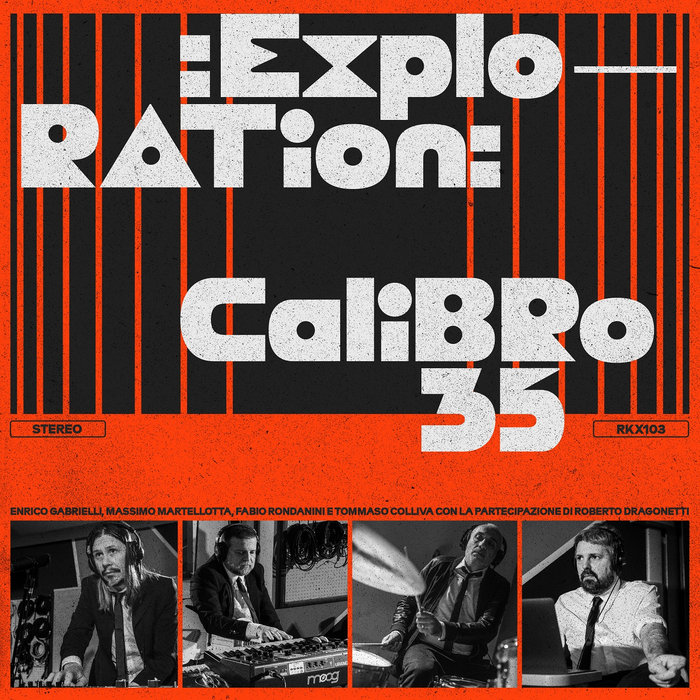
Mister Magic – Calibro 35
this blog is GROOVY – check out great Soul, Funk, Jazz, Hip Hop, Bass, Breaks , Reggae, House n many more TUNES
Crime funk. Just the name sends shivers down your spine and makes you wanna dance at the same time! A wild amalgamation of gritty narratives, syncopated rhythms, and some serious grooves, crime funk emerged from the vibrant streets where stories of intrigue met funky beats. Let’s take a jazzy stroll through its colorful history.
The roots of crime funk can be traced back to the late 1960s and early 1970s when funk music exploded onto the scene with artists like James Brown and Sly Stone laying down irresistible grooves that made even grandma want to bust a move. But as fun as it was to dance, there were darker themes brewing beneath those funky bass lines.
In came Blaxploitation films in the early ‘70s—movies like Shaft and Super Fly. These films not only brought iconic characters but also soundtracks filled with thick basslines, catchy horns, and sometimes shady storylines. Enter Isaac Hayes and Curtis Mayfield; they turned film scores into mainstage attractions!
Funny Fact:
Did you know that Isaac Hayes had such an epic love for his character “Chef” from South Park? He once said he would choose fried chicken over any gourmet meal if he had to pick one food for eternity!
As we grooved into the mid-70s, artists began taking inspiration directly from these cinematic tales. Bands like The Meters infused their sounds with streetwise stories about hustlers and heartbreakers while Parliament-Funkadelic took things cosmic without losing their urban edge.
Lyrics became more narrative-driven during this era; tales depicting life on the streets were told through slick beats that got heads nodding while audiences soaked up the realities behind them. Artists like George Clinton didn’t shy away from social issues—their tracks balanced between celebration and cautionary tales.
Funny Fact:
George Clinton claimed that his mothership (the spaceship used in live performances) almost landed on him once during a particularly energetic show! Can you imagine performing while dodging UFO landings?
By now, crime funk was solidifying itself as a genre—a place where storytelling collided beautifully with infectious grooves! As hip-hop began rising in popularity during late ‘70s/early ‘80s, elements started blending seamlessly; DJs looped these funky tracks creating breaks perfect for MCing over verses about street life.
Notable figures included Grandmaster Flash who sampled numerous cuts from classic funk records bringing new dimensions into hip-hop culture—and trust me when I say…those parties were explosive!
In parallel universe fun facts: how many know that musicians often moonlighted for other projects? For instance—Dr. Dre wasn’t always known just for rap; before hitting superstar-status he played keyboards in R&B bands trying out different flavors across genres!
Fast forward through synth-heavy tunes dripping outta clubs (shout-out Madonna!)—and just when you thought it couldn’t get better…here comes Prince weaving his unique magic combining pop-funk vibes hypnotizing everyone around him—all while narrating personal struggles amid glitzy explosions of talent.
With names like Rick James emerging alongside still-following legends such as Brown or Mayfield—they paved pathways merging styles further appealing outside traditional circles retaining cutting-edge freshness year after year!
Funny Fact:
Rick James reportedly snuck into Motown studios hiding behind fake mustaches more than once just so he could jam without anyone judging him too hard—imagine seeing THAT guy walking by your car today?!
Into today’s world where genres collide left right & center—we see modern acts channeling this rich legacy producing fresh materials full force powered by truthfully tough narratives thinly veiled under joyous party feels. Take Anderson .Paak or Bruno Mars—they embody old-school charm fused brilliantly within contemporary contexts captivating millions worldwide along each beat drop.
The beauty lies here though—it transcends simpler identities labeling music solely “crime” focused because isn’t every artist slightly rebellious at heart? They emulate lifestyles teaching humility too—you might hear similarities blooming lush amidst older influences tracing origins deep within souls everywhere—even straying toward heavier genres aiming toward justice fighting inequities vividly showcased throughout lyrical fibers spun together enticing listeners finding solace reflecting chaos all around us daily…
Funny Fact:
Bruno Mars is known for his beautiful voice—but did ya know he started impersonating Elvis Presley since age four?! That little dude knew what rocking looks like early-on blending talent against eras quite well!!
And there we have it—the rhythmic ride through history spiced generously tasting fruity bits humorously sprinkled throughout lives entwined alongside telling moments laced attractively gooey complete absurdity-style path connecting every note behind Crime Funk saga moving onward forevermore embracing complexities spiraling movement together universally felt resonate joyfully breaking barriers rhythmically expressing ourselves openly shameless evermore!

Mister Magic – Calibro 35

Nautilus – Calibro 35
![Calibro 35 – Nautilus [digital only]](https://le-groove.de/wp-content/uploads/2024/10/Calibro-35-Nautilus-digital-only.jpg)
Nautilus [digital only] – Calibro 35

Ready Steady feat. MEI & Arya Delgado – Calibro 35